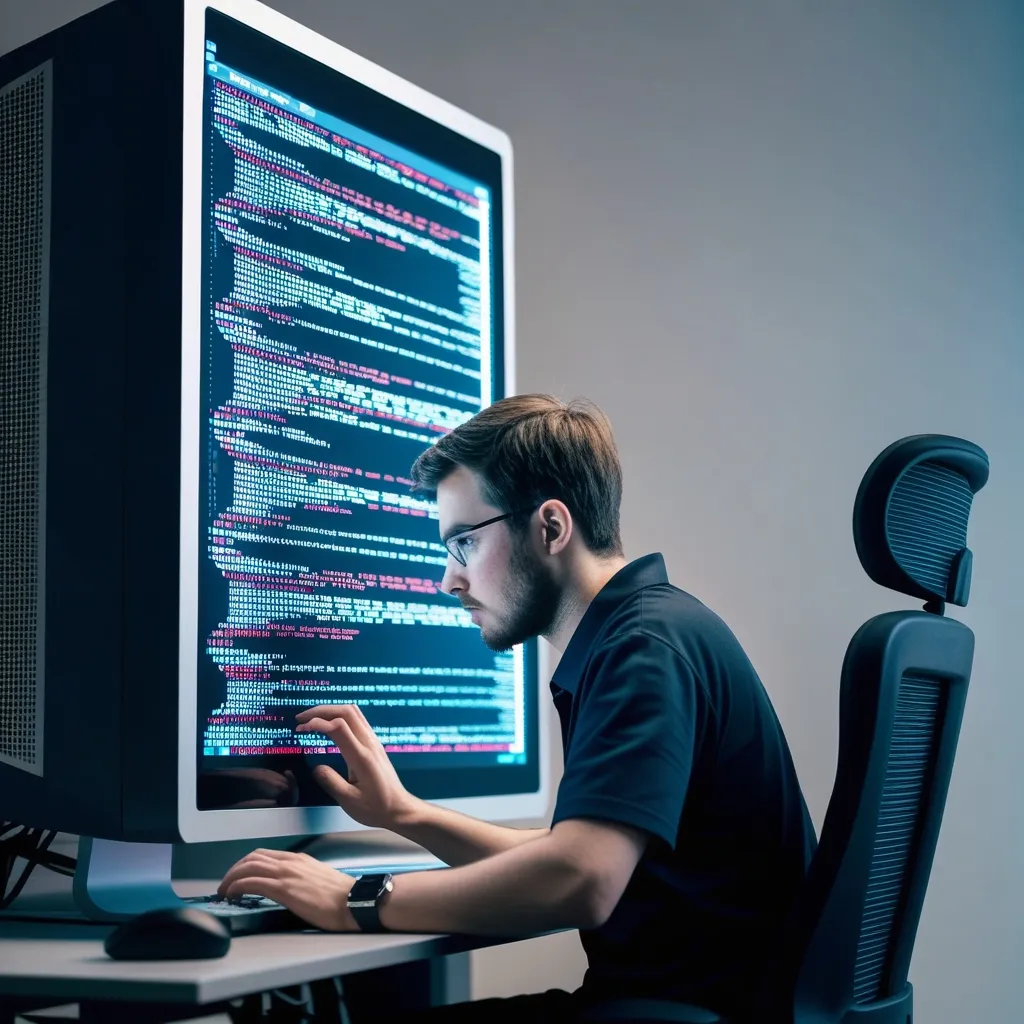Quantum computing is taking the tech world by storm, and it’s about time we dive into the exciting realm of quantum programming IDEs. As a developer who’s been tinkering with quantum algorithms for a while now, I can’t help but get pumped about the potential of these cutting-edge tools.
Let’s start by breaking down what makes a quantum programming IDE different from your run-of-the-mill classical IDE. For starters, quantum IDEs need to handle the unique aspects of quantum computing, like superposition and entanglement. It’s not just about writing code; it’s about visualizing and manipulating quantum states.
One of the key features of a robust quantum IDE is a powerful simulator. This allows developers to test their quantum algorithms without access to actual quantum hardware. I remember the first time I ran a quantum simulation – it was mind-blowing to see how quantum states evolved over time.
Now, let’s talk about the essential components of a fully functional quantum programming IDE. First up, we need a code editor that supports quantum-specific syntax highlighting. This might seem trivial, but trust me, when you’re dealing with complex quantum gates and operations, proper highlighting can save you hours of debugging.
Next, we need a quantum circuit designer. This visual tool allows developers to drag and drop quantum gates and build circuits intuitively. It’s like playing with LEGO blocks, but instead of building houses, you’re creating quantum algorithms. Here’s a simple example of how you might create a quantum circuit in Python using Qiskit:
from qiskit import QuantumCircuit
# Create a quantum circuit with 2 qubits
qc = QuantumCircuit(2)
# Apply a Hadamard gate to the first qubit
qc.h(0)
# Apply a CNOT gate with the first qubit as control and second as target
qc.cx(0, 1)
# Measure both qubits
qc.measure_all()
# Draw the circuit
qc.draw()
This code creates a simple quantum circuit that generates a Bell state, one of the fundamental entangled states in quantum computing.
Another crucial feature is real-time error checking and debugging. Quantum algorithms can be notoriously finicky, and having tools that can catch common quantum-specific errors is a game-changer. I can’t count the number of times I’ve accidentally applied a gate to the wrong qubit – having instant feedback on these mistakes is invaluable.
Integration with quantum hardware providers is another must-have. While simulators are great for development and testing, ultimately, we want to run our algorithms on real quantum computers. A good IDE should make it easy to connect to quantum hardware providers like IBM Q or Rigetti, and seamlessly deploy our code to these machines.
Speaking of deployment, version control integration is crucial. Quantum algorithms often require multiple iterations and collaborations, so having built-in Git support (or integration with other version control systems) is a huge plus.
Now, let’s talk about the language support. While there are several quantum programming languages out there, I believe a truly versatile quantum IDE should support multiple languages. This could include Python with frameworks like Qiskit or Cirq, Q# from Microsoft, or even lower-level languages like OpenQASM.
Here’s a quick example of how you might implement the same Bell state creation in Q#:
operation CreateBellState() : (Qubit, Qubit) {
use (q1, q2) = (Qubit(), Qubit());
H(q1);
CNOT(q1, q2);
return (q1, q2);
}
As you can see, the underlying concept is the same, but the syntax and approach differ slightly between languages.
One feature I’m particularly excited about is quantum-classical hybrid programming support. Many practical quantum algorithms involve a mix of classical and quantum computations. Having an IDE that can seamlessly handle both is crucial for developing real-world applications.
Let’s not forget about performance analysis tools. Quantum algorithms can be resource-intensive, and optimizing them is crucial. Tools that can analyze qubit usage, gate depth, and other quantum-specific metrics can help developers create more efficient algorithms.
Visualization is another key aspect. Quantum states can be complex and unintuitive, so having tools to visualize things like Bloch spheres or quantum circuits can be incredibly helpful. I remember the first time I saw a visual representation of quantum entanglement – it really helped solidify my understanding of the concept.
Community features are also important. Quantum computing is a rapidly evolving field, and having access to a library of quantum algorithms and circuits can speed up development significantly. Imagine being able to import and modify existing quantum algorithms with just a few clicks!
Documentation and learning resources are crucial too. Quantum computing concepts can be challenging, so having integrated tutorials, documentation, and even AI-powered assistants can help developers get up to speed quickly.
As we look to the future, I’m excited about the potential for AI-assisted quantum programming. Imagine an IDE that can suggest optimal quantum circuits based on your desired output, or automatically optimize your quantum algorithms for specific hardware.
Creating a fully functional quantum programming IDE is no small feat. It requires a deep understanding of both quantum mechanics and software development. But as quantum computing continues to advance, these tools will become increasingly important.
In conclusion, the ideal quantum programming IDE is more than just a code editor – it’s a comprehensive environment for designing, testing, and deploying quantum algorithms. It needs to bridge the gap between the abstract world of quantum mechanics and the practical realities of software development.
As someone who’s been fascinated by quantum computing for years, I can’t wait to see how these IDEs evolve. Who knows? Maybe in a few years, we’ll all be writing quantum algorithms as easily as we write classical code today. The future of computing is quantum, and it’s going to be an exciting ride!






